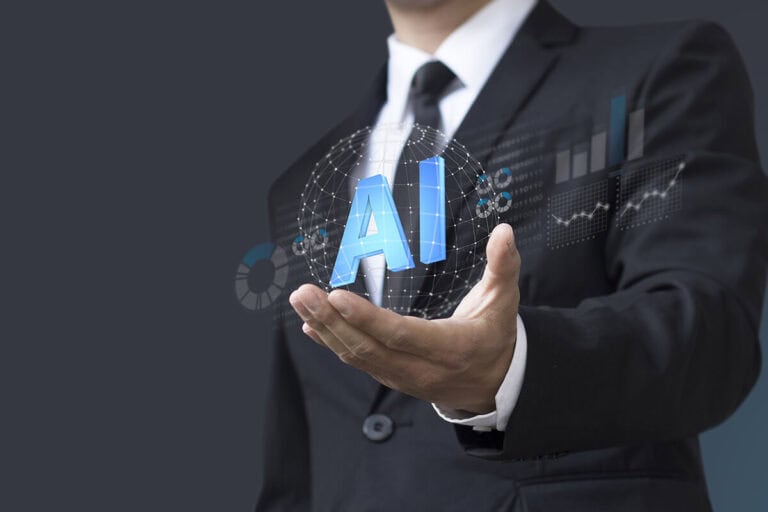Many people automatically think about machine translation (MT) or machine learning (ML) when you mention the terms localization and artificial intelligence in the same sentence. But while MT and machine learning are prime examples of artificial intelligence tech in action, they’re definitely not the only ones at play. AI can be deployed all along the workflow of a localization project, from translation through to quality assurance.
Table of Contents
ToggleIn fact, it seems like AI and localization are a dream team. In this article, we’ll be looking at how artificial intelligence is radically helping the industry evolve and the differences between traditional and AI-powered localization approaches.
The Effect of AI on the Localization Industry
Virtually every sector out there is exploring the opportunities of implementing AI, specifically machine learning (ML), deep learning (DL), neural machine translation, and text-to-speech technology (TTS), into their business models. There have been massive improvements in speech recognition, AI, speech synthesis, and natural language processing technology within the localization industry. However, many argue that regardless of how advanced algorithmic tech gets, it’ll never replace the human brain.
With that being said, here’s a look at the most notable changes we expect AI to bring into existence within the localization sector:
Localization Becomes More Authentic with Machine Learning
AI tech can track the evolution of language, so it’ll become easier to identify translated words that are outdated. AI can also work with idioms and sayings across multiple languages and accommodate language changes at the regional level.
Since AI extracts analytics reports and processes massive amounts of data in real-time, ML and DL can help make sense of this data. With this approach, AI can help identify slang that has been incorporated into common language, which ensures that the most authentic and current language is used in localized content.
AI Improves the Efficiency and Turnaround Time of Localization Projects
Traditional localization tools accurately translate content, but these tools aren’t always as fast as we’d like them to be. But with the help of AI, the time it takes to localize content can be drastically reduced. AI helps companies get more projects done in a shorter amount of time and at a reduced cost.
Images and Audio Can be Localized with AI
Images and audio are two of the most critical aspects that need to be localized, but also the elements that often take the longest to localize. The ability to localize these elements is one of the most significant developments within the AI field.
Artificial intelligence also powers machine translation software, and these are being used more widely than ever before. But the localization industry has also adopted new approaches to MT. Augmented translation and adaptive MT keep the translator in charge of the localization process to improve MT output. The gain? Speed!
Comparing Traditional VS AI-powered Localization Processes in the Language Services Industry
Language Style
Traditional localization requires people to share a source and target language to consistently translate highly matched sentences. Translators work with more context to understand the product they’re localizing. However, with the help of AI, training elements are relatively independent.
There’s no need to explain the context when AI is deployed, as a translator can translate a single string of data without any particular context. AI-powered localizations can cover more broad forms of expression, both formal and informal. This includes slang, local dialects, incomplete sentences, and abnormal syntactic sentences.
Localization Process
According to the ultimate guide to localization, traditional localization sees linguists translating content according to sequential steps. These include translation, editing, and finally, QA. In many cases, the localizers rely on translation management systems (TMS) or computer-assisted translation (CAT) tools.
In traditional localization, the translators must also examine large amounts of content and ensure that it’s completely translated before it can be reviewed by another member of the team. Traditional localization doesn’t allow multiple people to work on the same source file since the production is organized under exclusive file ownership.
However, with AI-powered localization, the independent nature of the data collected makes it easier to perform string-based translation that allows multiple resources to process strings of data from a single file without the need for understanding the broader scope of the context.
Resources
Traditional localization is heavily dependent on the expertise of qualified and experienced linguists. These linguists have extensive experience in areas such as IT, legal, marketing, and medical industries. They also make use of CAT tools, industry guidelines, and translation rules when doing localization.
But with AI-powered localization, the linguists involved in the process do not need such extensive domain-specific expertise. Instead, they are required to have a deep understanding of language, local forms of expression, and local cultures.
What the Future of AI and Localization Might Look Like
Businesses that rely on traditional localization are looking for solutions that are faster, more efficient, and less expensive. And as a result, we’re seeing more and more traditional localization approaches take on an agile nature. But the changes we’re seeing are only the beginning of the journey that is machine-enhanced human intelligence.
Localization service providers that aren’t in tune with AI advancement in our digital age might risk falling behind. Although AI won’t replace humans in the localization industry any time in the foreseeable future, it’s essential for humans to tap into AI technology and computer power to deliver the most accurate and efficient localization services in line with modern expectations.





